Ladybugs, or ladybirds, are small, colorful, and incredible insects that are popular for their cuteness and usefulness in controlling garden pests.
Everyone likes ladybugs—children and adults alike—perhaps because of their cute and beautiful color patterns or maybe the fact that they’re harmless, friendly, and familiar insects!
Additionally, since these little bugs are very easy to spot, they are extremely helpful in introducing children to the world of insects in a very fun and interesting way.
It may be fun to catch and watch these cool ladybugs crawl, but they are far more interesting and smart than you think!
Yes, these lovable ladybugs are more than just their pretty colors and cute appearances.
- Related article: All Garden Insects
Are you ready to know more about these little critters than what meets the eye? Here are 15 amazing facts, plus 5 more bonus ones, about ladybugs that might surprise you!
1. Ladybugs Aren’t Actually Bugs!
Despite their common name, ladybugs aren’t considered bugs by scientists, since this term only applies to insects from the order Hemiptera.
The correct name would be Lady Beetles since they belong to the family of beetles called Coccinellidae, which includes more than 6,000 different species worldwide, and the order Coleoptera, like other beetles.
You’ll be surprised at how similar they are once you observe them. For example, all beetles have hard outer wings and undergo a complete metamorphosis.
It’s interesting to know that the European name is more accurate, as there they are called Ladybird Beetles, or more simply Ladybirds.
Learn more about the Asian Beetle vs Ladybug differences.
2. Ladybugs Have a Legendary Name
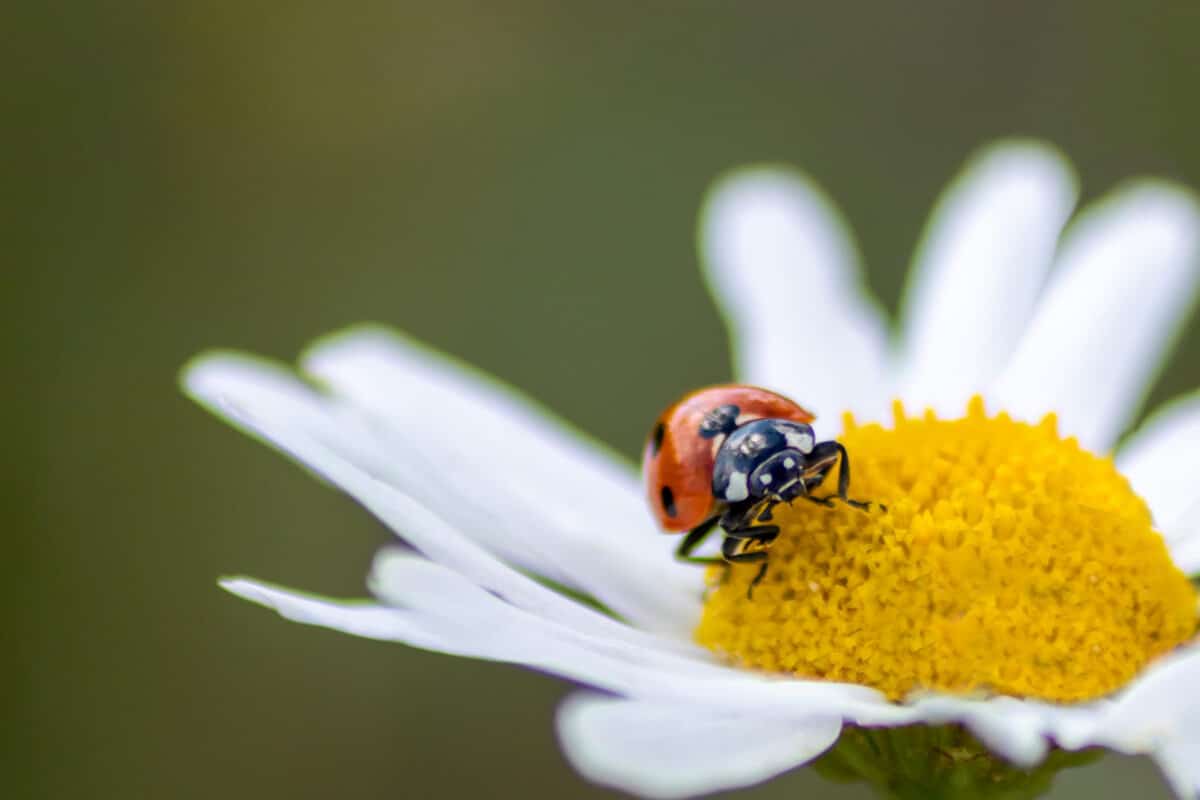
Legend has it that the “lady” in ladybug, or lady beetle, refers to the Virgin Mary.
It seems that in the Middle Ages, European farmers resorted to praying to the Virgin Mary when their crops were plagued by pests.
After their prayers, they began seeing ladybugs in their fields, and their crops were saved. Afterward, the name was born.
It is also believed that the 7-spotted lady beetle was the first to be named after the Virgin Mary. In Germany, it’s called Marienkafer, which translates to Mary Beetles.
3. When Threatened, Ladybugs “Bleed” From Their Knees
Some ladybugs, though not the red ones, excrete a foul-smelling yellow fluid from their legs when threatened.
It’s a technique that allows them to scare off their attackers, both because of the smell and because it makes them seem sick and unsafe to eat.
This liquid is made up of a mix of alkaloids, which are harmless to humans. However, they can be a nuisance in people because they stain surfaces.
While the adults emit this liquid from their leg joints, the ladybug larvae ooze it from their abdomens.
4. Ladybugs’ Colors Are Deterrent to Predators
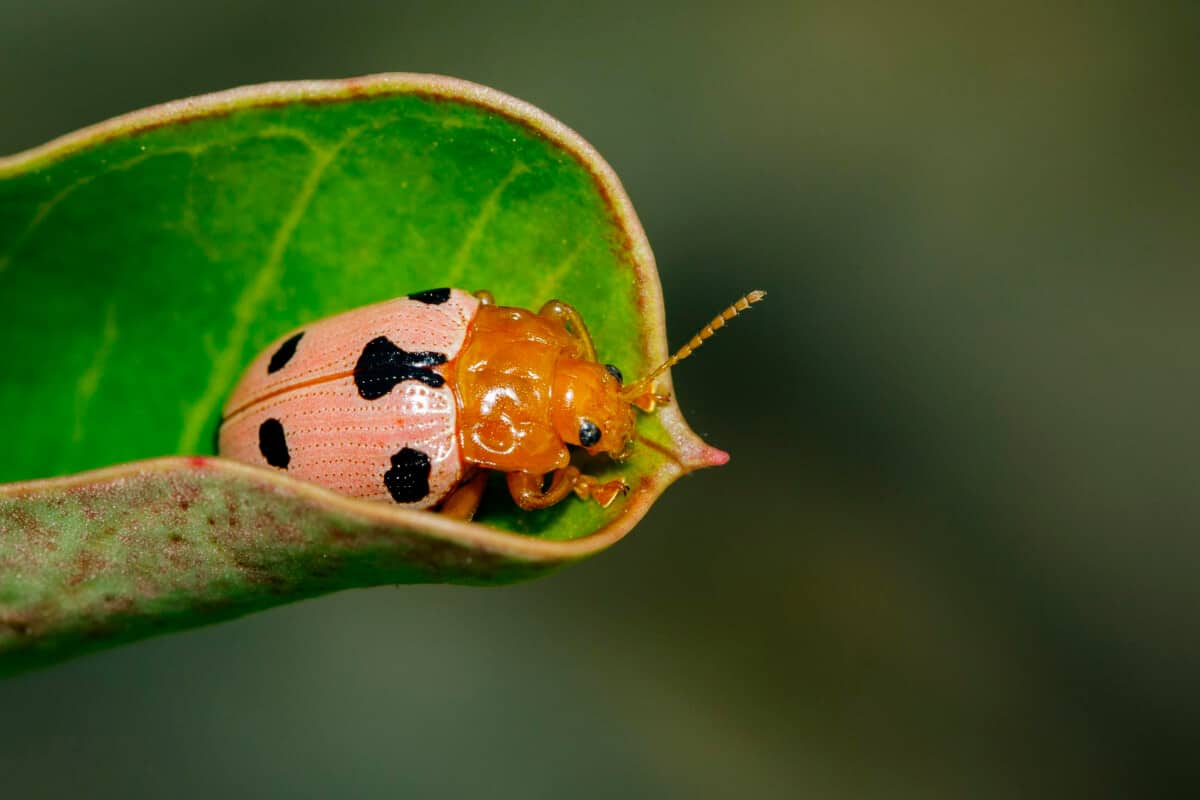
It’s common in the animal world to use bright colors to signal danger.
Many red or black insects are toxic, so predators learn to avoid them. Others use this tactic to defend themselves, even if they are not actually poisonous.
Ladybugs can be dangerous to some insect-eating birds, small mammals, and other potential predators, and this amazing defense tactic allows them to avoid most predators.
Unfortunately, some insects still prey on them, such as assassin bugs, stink bugs, and spiders.
5. Ladybugs Are Fierce Predators With a Shocking Feeding Habit
Ladybugs are very hungry and voracious beetles, and are amazing and beneficial predators of plant pests!
They can eat up 50 aphids per day. In a lifetime, they may consume from hundreds of aphids up to 5,000 aphids!
These tiny insects are their favorite prey, but they also feed from many other soft-bodied insects, such as scale insects, white flies, thrips, and mites.
All of these are prolific plant pests for the garden, especially the huge aphid populations, which is why they are called beneficial ladybugs as they help with biological control.
Additionally, their feeding habits can be a bit gruesome, as most ladybug species lay hundreds of eggs in clusters in aphid colonies.
This is their ready source of food so that the newborn ladybug larvae and baby ladybugs can start eating right away.
There are also a few species of ladybugs that can actually be pests themselves, such as the Mexican Bean Beetle and the Squash Beetle.
Read more about how Ladybugs Eat Aphids.
6. Young Ladybugs Look Like Alligators
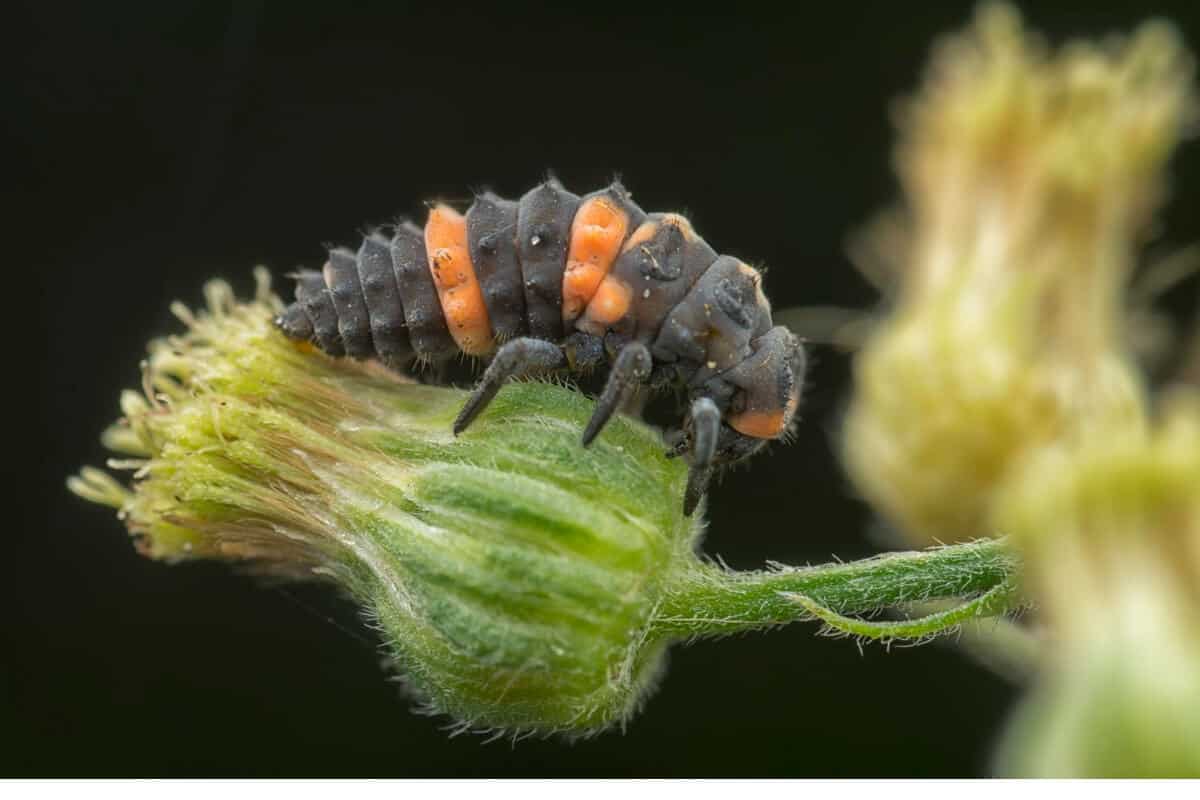
Most people picture cute red and black beetles when they think about ladybugs.
If you are among them, you will probably be surprised to know that young ladybugs, or larvae, look completely different.
It’s most likely that they would never be considered cute, as they look like alligators in miniature. They have long, spiny bodies and legs sticking out from the sides.
This stage in the life of a ladybug lasts for about a month, during which the larvae feed ravenously from hundreds of insects in order to store enough energy to grow and complete their metamorphosis.
7. Ladybugs Lay Many Infertile Eggs
It has been observed that female ladybugs lay plenty of infertile eggs.
You might think that this seems like a huge waste of energy and resources, but there is actually a very good reason for it.
Sometimes, young ladybugs have a difficult time finding enough insects to satisfy their needs.
In this case, they can feed from the infertile eggs which are readily available.
In fact, a single ladybug can lay up to 1,000 eggs in a season, depending on outside conditions.
When they know the food will be scarce, they plan ahead and lay more infertile eggs for their young.
8. Ladybugs Are Cannibals
Contrary to how cute they look, ladybugs are actually cannibals and do not just eat plants.
Ladybugs are notorious beneficial insects since they feed on many pests. However, if their usual prey is lacking, they will do anything they can to survive, even feed on their relatives.
They don’t have any ethical issues in eating other ladybugs. The only problem they face is that the adult ladybugs are too tough-skinned and difficult to consume.
Due to that, they prefer the larvae or individuals which have just molted and are still soft enough. They also eat eggs which provide their much-needed protein.
9. Ladybugs Hibernate in “Clusters” for Up to 9 Months at a Time
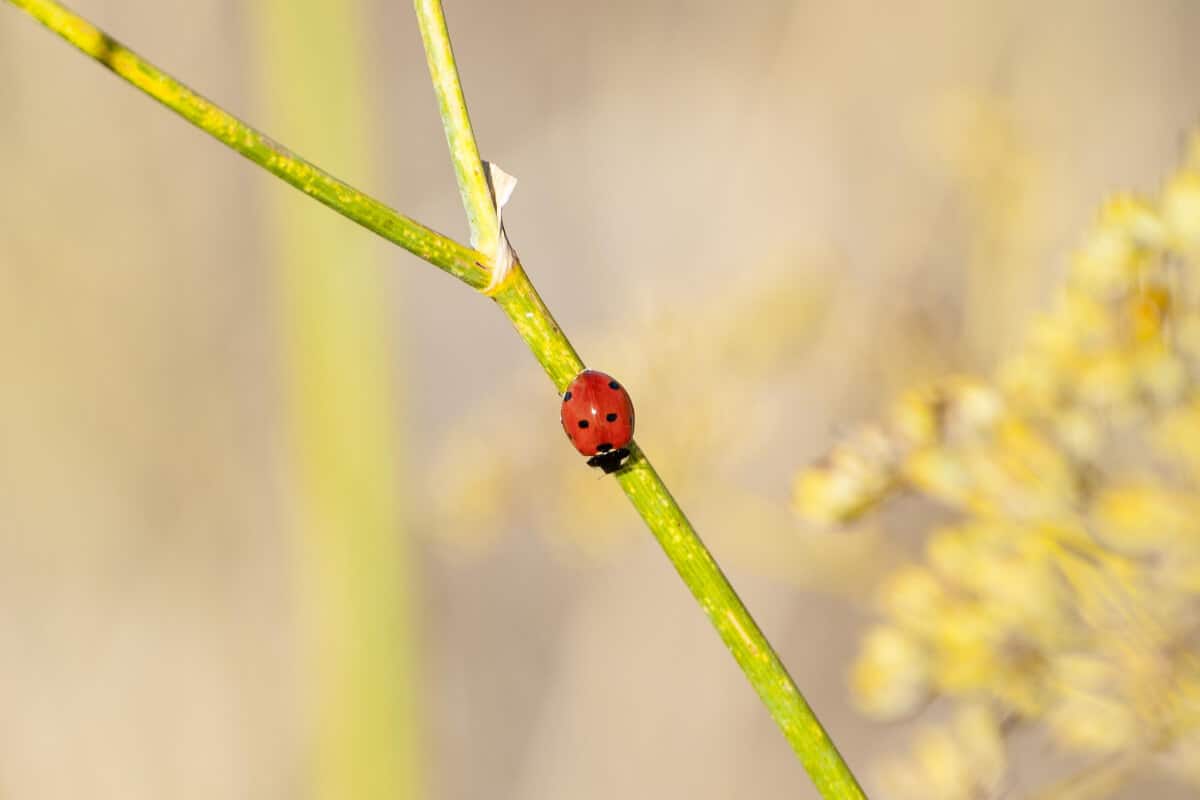
Ladybugs cannot survive in cold temperatures. It’s mostly because their preys aren’t present in these conditions too.
The lack of prey is actually what warns ladybugs that winter is approaching so they can start looking for shelter.
For the duration of the colder months, they remain in a phase called diapause, or hibernation, with their clusters.
These clusters can consist of thousands of ladybugs, which helps them to survive the cold temperatures.
Depending on the species, they might look for shelter outdoors in protected locations, such as under leaves or behind bark, or seek to enter indoors.
The Asian Lady Beetle is especially disliked because, in North America, it invades homes in huge numbers, looking for warmth.
While in diapause, ladybugs survive on the fat reserves they have accumulated during the summer. They start being active again when most insects reappear in the spring.
10. The Spots of a Ladybug Will Tell You Something About It
Urban legend says that counting the spots on the back of a ladybug can tell you its age.
That is actually not true, as every ladybug has the same number of spots throughout its adult life. However, it still can be fun to notice them because they can provide interesting information.
For instance, most of the time, the number and location of the spots are species-specific.
The most common ladybug, for example, is the Seven-Spotted Lady Beetle, which, as you might have guessed, has seven black spots on its red back.
Well, the urban legend isn’t exactly wrong as there is actually something about the spots that can hint at the ladybugs’ age: the more faded they are, the older the beetle.
11. Ladybugs Actually Have a Hidden Secret
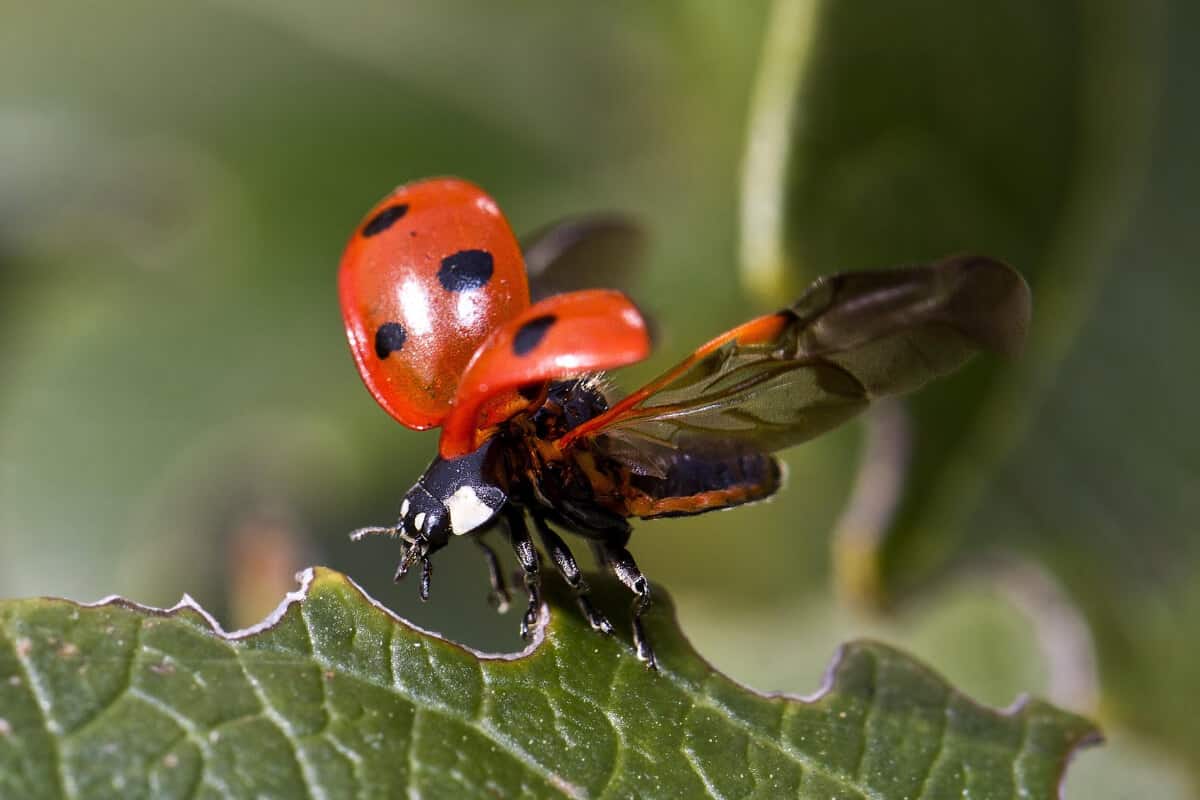
Behind their hard, outer shell, ladybugs hide a marvelous surprise—they actually have a hidden pair of wings that look completely different from the outer ones.
These are called elytra, and their only purpose is to protect the real ladybug wings, which are fragile wings.
The thin inner wings are difficult to see because they move at an incredible rate, at 85 beats per second! They can unfold in 0.1 seconds and are much larger than the insect’s body.
However, only adult ladybugs have pairs of wings, as they are not needed in the other stages of development.
12. Not All Ladybugs Are Female
Contrary to popular belief, there are actually male ladybugs. It may sound ironic, but it’s true!
In fact, male and female ladybugs look utterly similar, with only subtle differences in their physical appearance.
13. Ladybugs Can Range in Size From 0.03 to 0.7 Inches
It is a common knowledge that lady beetles are tiny, with an average ladybug only ranging in size from 1/16 of an inch to 3/8 of an inch.
Of course, this comes with a lot of factors as some species are larger than others.
Age also affects their size, with younger ladybugs usually being smaller than adults.
14. In Some Cultures, Ladybugs Are Considered Good Luck Symbols
In some countries, like Russia, seeing a ladybug is believed to bring good fortune and prosperity.
Others believe that if a ladybug lands on you, it’s a sign of good luck or that your wishes will come true.
15. Ladybugs Have a Short Lifespan
Ladybugs have a relatively short lifespan, typically living for about one year. However, their average lifespan can vary depending on the species and environmental factors.
Some species of ladybug may live for up to two years, while others may only live for a few months.
5 Quick Bonus Facts About Ladybugs
1. Some ladybugs don’t have spots, but instead have stripes.
2. Ladybugs use their antennae and feet to smell.
3. The jaws of a ladybug chew from side to side.
4. Male ladybugs are tinier than female ones.
5. Flying without rest is easy for ladybugs as they can fly up to 74 miles.
Ladybug Fun Facts Final Thoughts
Amazing, right? Ladybugs are indeed incredible and helpful insects that have a lot more to them than their bright colors.
From their unique defense mechanism to the fact that they are actually beetles, there’s so much to learn about these little critters!
They are not just the most natural form of pest control that play an important role in controlling pests for farmers, they are even considered good luck symbols in some cultures!
So next time you see a ladybug, take a moment to appreciate all the wonderful things about this tiny but powerful insect!
Check out these amazing articles to learn more about ladybugs:
Sources:

